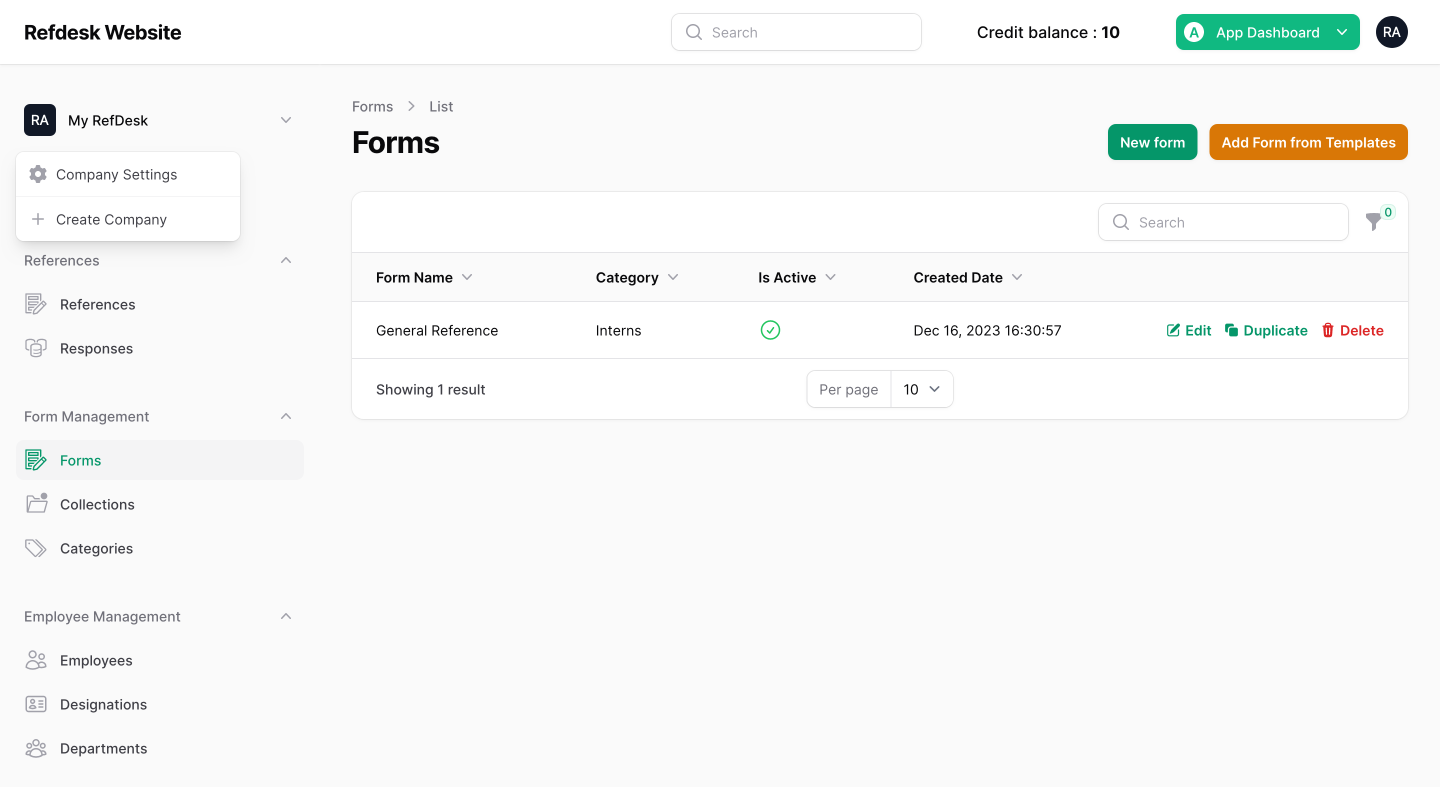Comparing Filament Excel Plugin vs. Filament Default Export Action
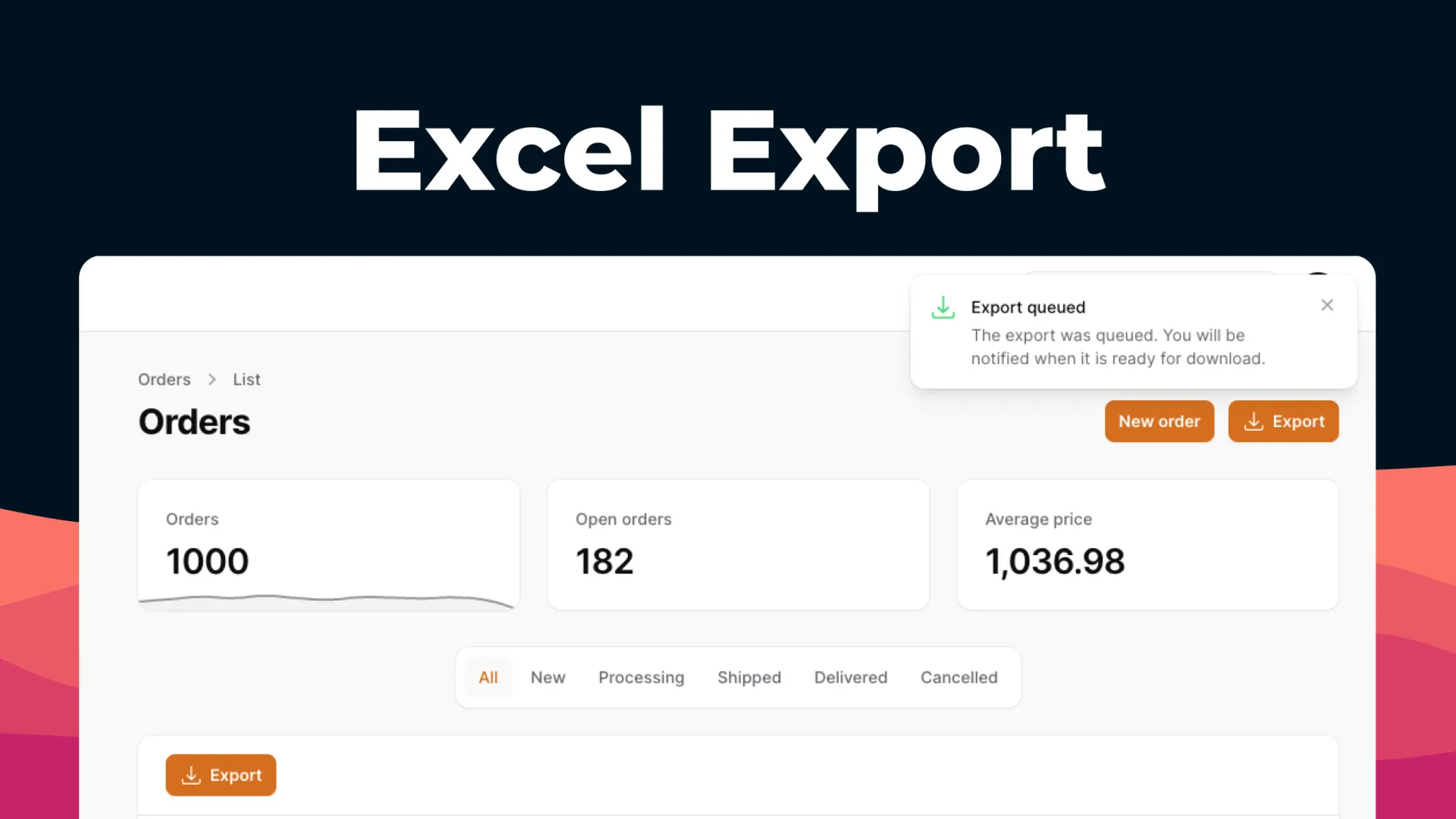
Exporting data is a common requirement for many web applications, especially when working with administrative panels, reports, or business insights. Filament PHP, a popular Laravel admin panel, provides built-in export functionality via prebuilt actions. However, the Filament Excel Plugin (pxlrbt-excel) extends these capabilities significantly.
This blog post will compare the Filament Excel Plugin with Filament's default export action, discuss their use cases, and help you decide which one fits your needs best.
Overview of the Filament Excel Plugin
The Filament Excel plugin — created by Dennis Koch—is one of the most popular solutions for exporting Excel files from Filament. Built on top of Laravel Excel and PhpSpreadsheet, it offers an extensive set of features for developers who need advanced export capabilities.
Key Features
- Multiple Integration Points:
The plugin provides export actions for table bulk actions, table header actions, and even record page exports. This makes it highly versatile regardless of how your data is presented. - Customizable Export Classes:
You can easily define multiple export classes with different settings (columns, headings, formatting) that the user can choose from via a modal. This flexibility lets you tailor exports for different contexts, such as exporting data from forms or tables. - Advanced Formatting & Column Control:
With features like custom column definitions, headings overrides, conditional formatting, and even the ability to ignore default formatting, you have complete control over the Excel output. For example, you can set column widths, apply currency formats using PhpSpreadsheet, and customize filenames. - Queued Exports for Large Datasets:
The plugin supports queued exports with chunk size configuration, ensuring that exporting very large datasets doesn’t block your application’s performance. - User Input & Customization Options:
It allows the end-user to specify options such as the filename and writer type through modals, enhancing the flexibility of the exported files. - Integration & Theming:
Designed to work seamlessly with both Filament 2.x and 3.x, it supports dark theme and multi-language setups, making it ideal for modern, customizable admin panels.
Overview of Filament 3’s Default Export Action
Introduced in Filament v3.2, the default export action is a robust, out-of-the-box feature designed to simplify data exports without additional dependencies.
Key Features
- Seamless Integration with Filament:
Being part of the core Filament framework, the default export action integrates naturally with your panel’s UI. It’s available as a header action or a bulk action, so you can easily let users export filtered or selected rows. - Interactive Export Modal:
When triggered, a modal appears that allows users to choose which columns to export and even modify their labels on the fly. This interactivity makes the export process more user-friendly. - Exporter Classes & Automatic Column Generation:
Developers can quickly scaffold an exporter class via artisan commands (e.g., make:filament-exporter). Filament can even automatically generate export columns based on your model’s database structure, speeding up development time. - Customization via Export Columns:
Similar to the Excel plugin, you can define custom export columns, format states using callbacks, and handle relationship data (e.g., counting related records or aggregating values). - Flexible Query Modification:
The action provides a way to modify the export query—ensuring that only filtered or specific data gets exported—via methods like modifyQueryUsing(). - Multiple Export Formats:
Out-of-the-box, it supports both CSV and XLSX formats, giving users a choice in how they want to receive their exported data.
Code Examples
Customizing Export Columns
Filament Excel Plugin:
class UsersExport extends BaseExport
{
public function columns(): array
{
return [
Column::name('id')->heading('User ID'),
Column::name('name')->heading('Full Name'),
Column::name('email')->heading('Email Address'),
];
}
}Filament Default Export:
class UsersExporter extends Exporter
{
protected function getColumns(): array
{
return [
Column::make('id')->label('User ID'),
Column::make('name')->label('Full Name'),
Column::make('email')->label('Email Address'),
];
}
}Modifying Export Query
$exportAction->modifyQueryUsing(fn (Builder $query) => $query->where('status', 'active'));Formatting Excel Cells (Filament Excel Plugin)
class UsersExport extends BaseExport
{
public function format(Spreadsheet $spreadsheet)
{
$spreadsheet->getActiveSheet()->getStyle('A1:C1')->getFont()->setBold(true);
}
}Use Cases & Recommendations
When to Choose the Filament Excel Plugin
- Advanced Excel Exports:
If your project demands complex Excel features—such as custom formatting, multiple export classes, or leveraging Laravel Excel’s advanced functionality—the Excel plugin is the way to go. - Highly Customized Exports:
Projects that require custom column definitions, specific formatting rules, or even custom download URL generation will benefit from the extensive customization options provided by the plugin. - Large Datasets:
For applications that need to export a significant amount of data without performance issues, the plugin’s support for queued exports and chunk size adjustments makes it a robust choice.
When to Use Filament's Default Export Action
- Out-of-the-Box Simplicity:
If you’re looking for a solution that requires minimal setup and integrates perfectly into your existing Filament project, the default export action is ideal. - Standard Export Needs:
For many applications, the ability to quickly export CSV or XLSX files from a filtered or selected dataset is sufficient. The built-in action offers this functionality with an easy-to-use modal interface. - Tight Filament Integration:
Since the default export action is part of Filament’s core, it ensures consistency in design and behavior, which is beneficial if you prefer to minimize external dependencies.
Conclusion
Both the Filament Excel plugin and Filament’s default export action are powerful tools for data export in Laravel admin panels. The choice between the two largely depends on your project’s specific needs:
- Choose the Filament Excel Plugin if you need highly customized Excel exports with advanced formatting options and robust handling of large datasets.
- Opt for the Default Export Action if you’re looking for a simple, integrated solution that quickly gets the job done with minimal configuration.
By understanding the strengths and intended use cases of each, you can confidently select the best export solution to meet your development and user experience goals.
Related Articles that May Be to Your Interest
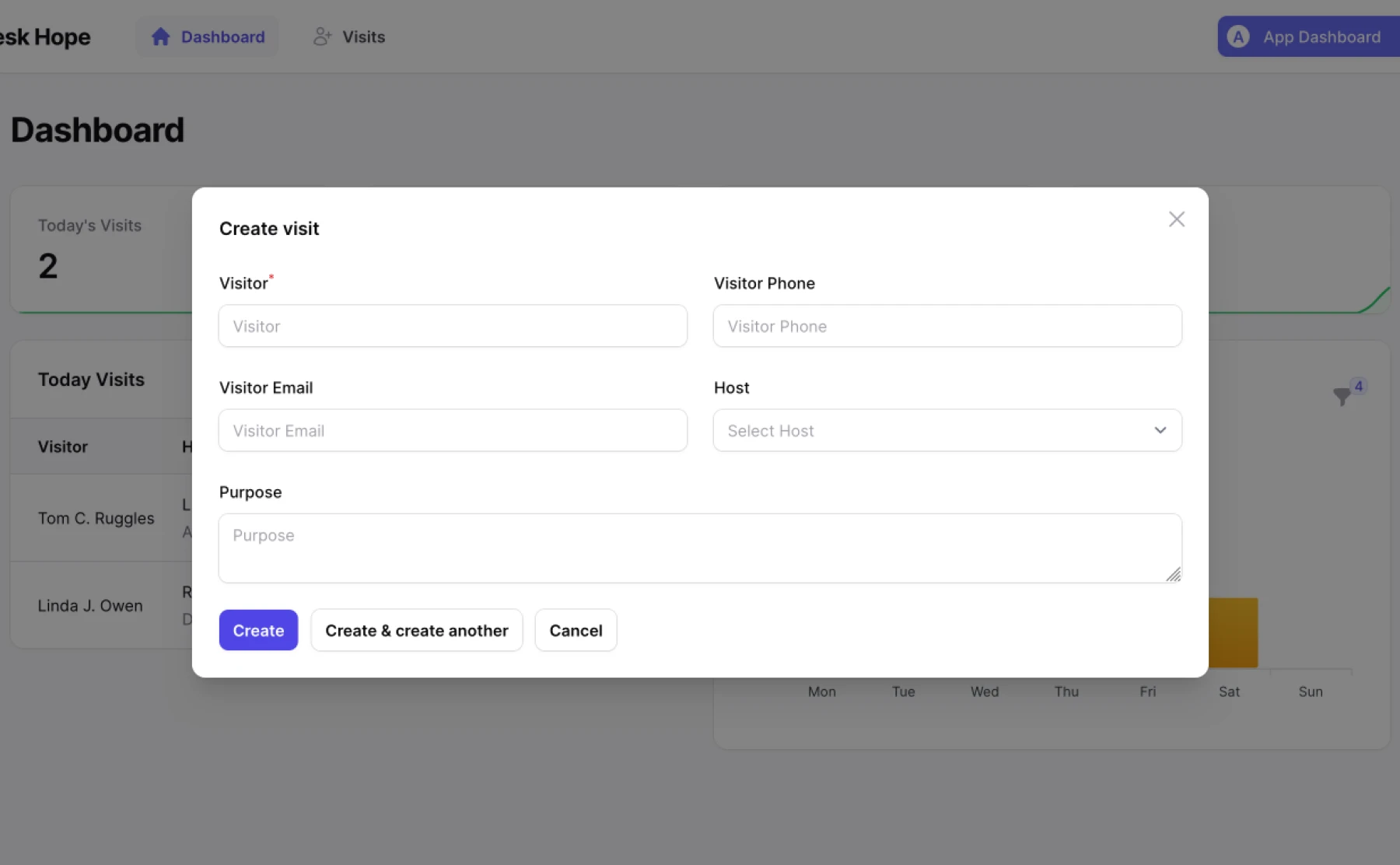
Introducing FrontDesk: Your Open-Source Visitor Management System
Streamline visitor check-ins with FrontDesk, an open-source Visitor Management System built with Laravel & Filament PHP.
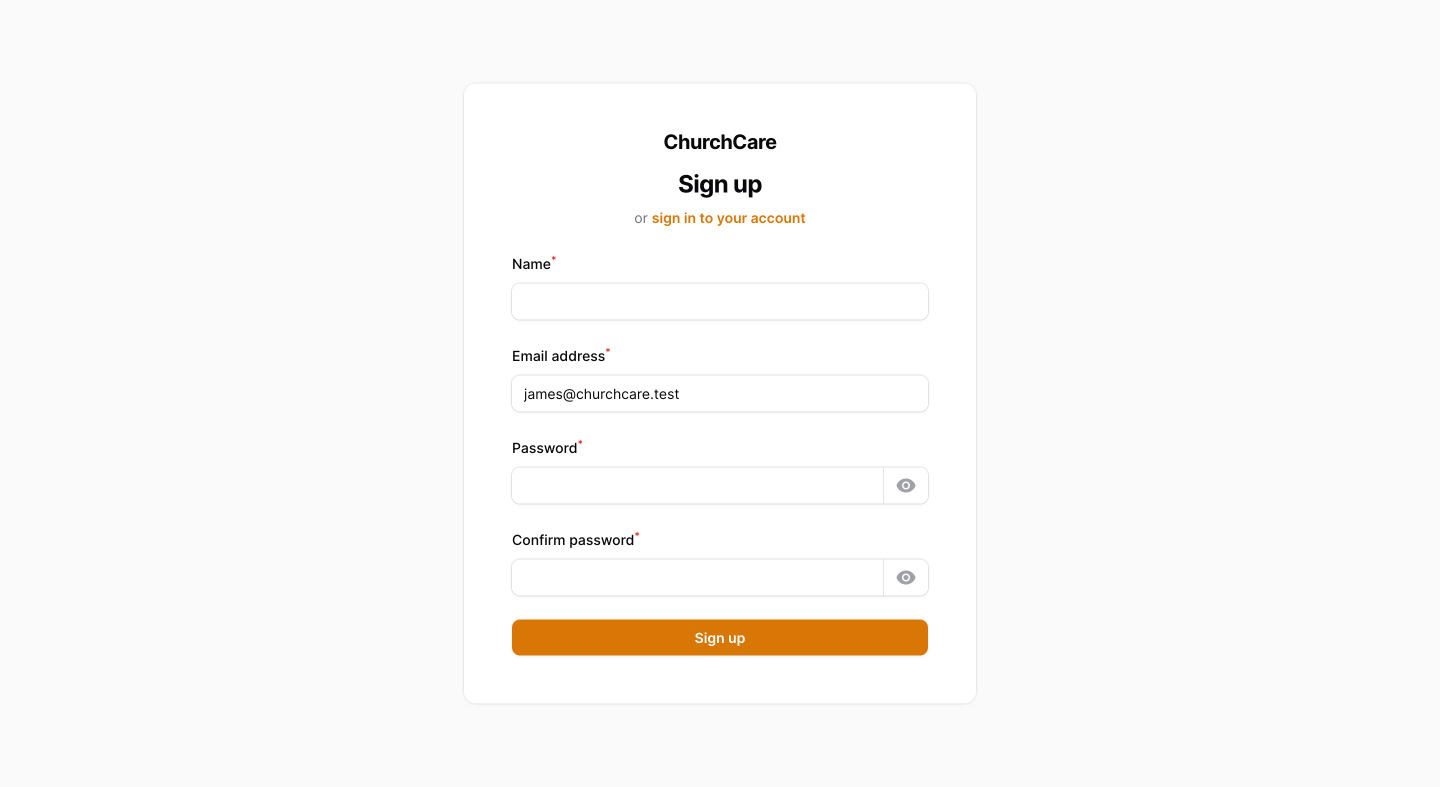
Filament: Invite Only Registration via Email Invitations
Learn how to implement an invite-only registration feature using Filament, ensuring exclusive access to your platform and enhancing user engagement through personalized invitations and controlled membership enrollment.
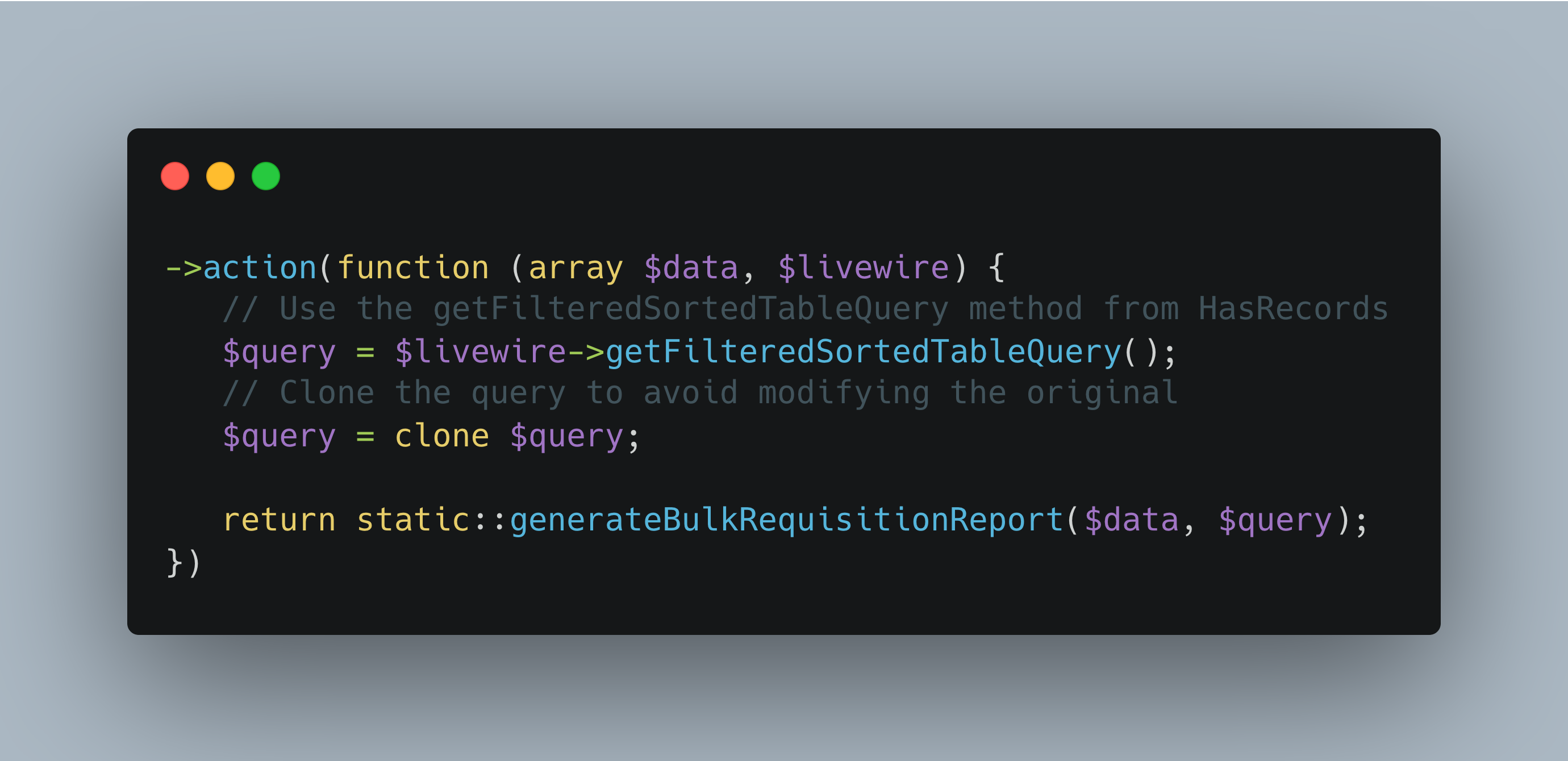
How to Dynamically Filter and Export Table Data in Filament
Learn how to extract, filter, and generate accurate reports from Filament tables with getFilteredSortedTableQuery(). No more manual filtering!
